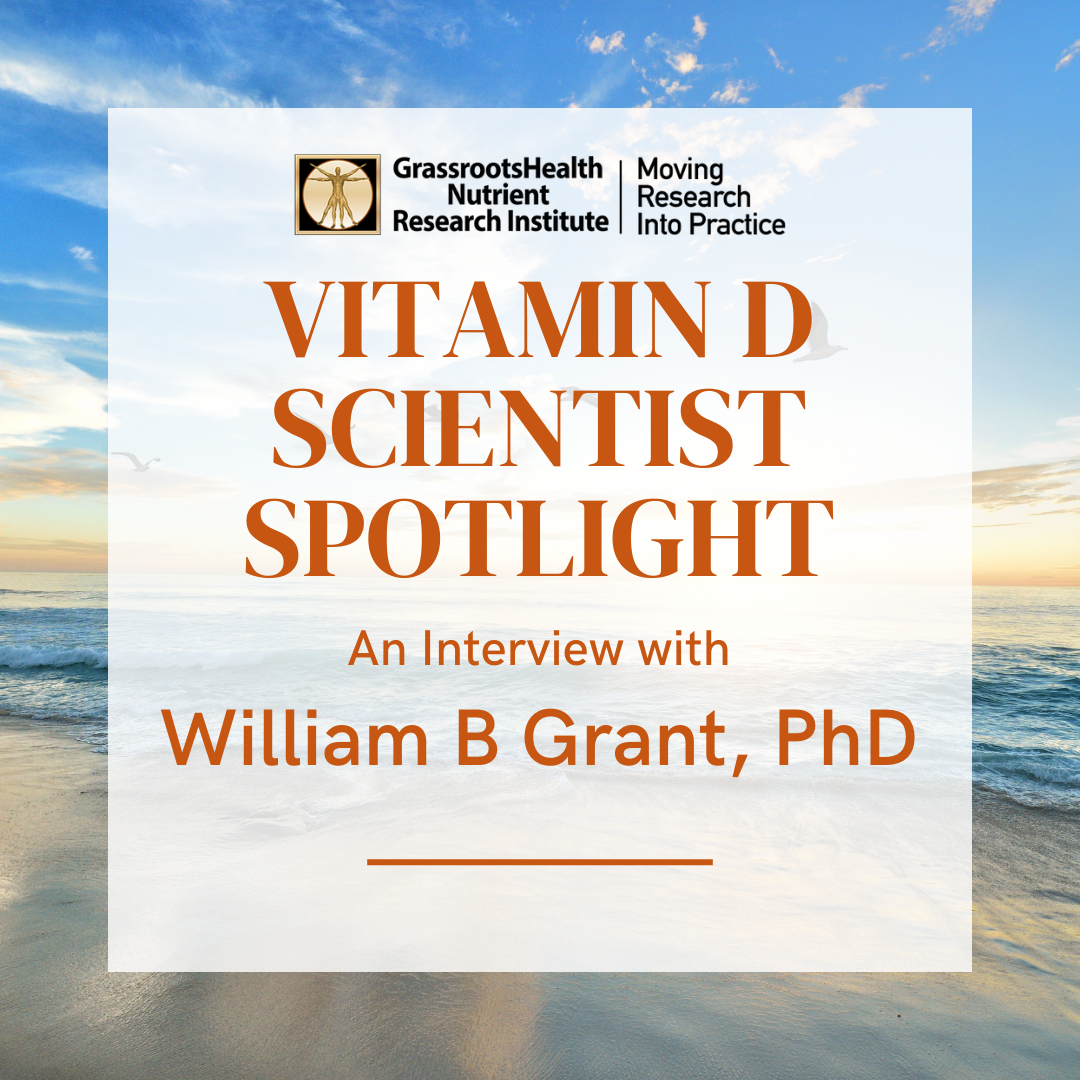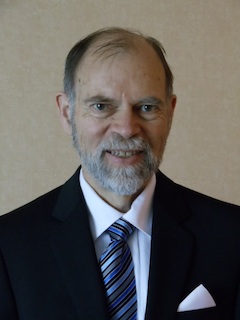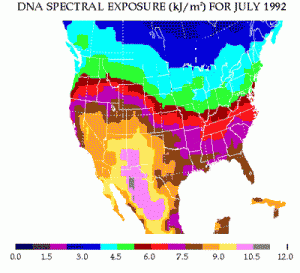Published on July 12, 2024
Learn more about our GrassrootsHealth Scientist Panel Members, their contributions to vitamin D research, and what inspires them to keep moving the research forward
Key Points
- To highlight the credibility and add depth to our Scientists’ Call to Vitamin D*action, we will be interviewing several of the scientists responsible for the research supporting it. Today, we are honored to interview Dr. William B. Grant.
- Dr. Grant began studying vitamin D in 1999. His research involves solar UVB and cancer, participating in reviews regarding vitamin D guidelines, and pointing out problems with published studies.
- Key messages from Dr. Grant are that vitamin D is a very important determinant of health, significantly reducing risk of many diseases and increasing life expectancy, and that vitamin D supplementation is the most efficient way to maintain good health

GrassrootsHealth is honored to have a panel of senior vitamin D scientists and researchers who have contributed to and endorsed our Call to Vitamin D*action. The purpose of this Call to Action serves as a consensus among top vitamin D researchers that the key to vitamin D for health is not measured by intake but by achieved serum level – specifically – achieving and maintaining a 25(OH)D level between 40-60 ng/ml (100-150 nmol/L).
There are many messages about how vitamin D is essential for our health that fail to properly address how the individual should approach vitamin D dosing for themselves, especially since research shows that one dose does not fit all individuals. There is also confusion about what target vitamin D level is optimal. This Call to D*action is a clear and concise message, from the vitamin D experts themselves, to share with those who hear about the benefits of vitamin D but who are often confused or not informed about what to do with that information for their own health.
To highlight the credibility and add depth to our Scientists’ Call to Vitamin D*action, we will be interviewing several of the scientists responsible for the research supporting it. Today, we are honored to interview Dr. William B. Grant.
Interviews with the Scientists: Dr. William Grant
 Introduce yourself (name, degrees, current position, affiliations, etc.)
Introduce yourself (name, degrees, current position, affiliations, etc.)
William B. Grant, PhD (Physics, UC Berkeley, 1971).
Director, Sunlight, Nutrition and Health Research Center
San Francisco, CA
If you have social media accounts that you would like for us to connect with and share, please list them here:
X (Twitter) @wbgrant2
Based on your knowledge of vitamin D, what is your recommended target vitamin D level range? What other factors do you feel are important to consider along with the intake required to achieve this target range?
I recommend 40-60 ng/mL (100-150 nmol/L). The important factors to consider include age, weight, skin pigmentation, sun exposure when vitamin D can be produced, pregnancy, and illnesses.
What is your current vitamin D level?
Probably around 60 ng/mL.
How much vitamin D do you take, and how long have you been taking that amount of vitamin D?
I took 5000 IU/day for a few years recently, achieving 100 ng/mL. I have stopped taking so much vitamin D in order to get back into the 40-60 ng/mL range. I will start using a sperti.com Vitamin D Sunlamp as it produces vitamin D as well as liberates nitric oxide from nitrate stores under the skin. Nitric oxide has benefits in reducing risk for infection and cardiovascular disease including reducing blood pressure.
ABOUT YOUR RESEARCH
How long have you been involved in vitamin D research?
I started studying vitamin D in 1999 when I obtained a copy of the Atlas of Cancer Mortality in the United States, 1950-94, [Devesa SS, Grauman DJ, Blot WJ, et al., National Institutes of Health/National Cancer Institute, NIH Publication No. 99-4564, Sept. 1999] (Available from Google books).

Map of UVB dose at the surface for July 1992, made by NASA using data from the Total Ozone Mapping Spectrometer (TOMS)
Do you have a specific focus with your vitamin D research?
My research involves solar UVB and cancer, participating in reviews regarding vitamin D guidelines, and pointing out problems with published studies.
What are some of the key findings from your research involving vitamin D?
My key findings include several ecological studies based on the Atlas of Cancer Mortality analyzing how much each cancer’s mortality rate was inversely correlated with solar UVB. My other major contribution was a paper published in April 2020 suggesting that vitamin D supplementation would be useful in preventing and treating COVID-19.
What is the key message you want to get out about vitamin D 1) to individuals, 2) to practitioners, and 3) to public health authorities?
Individuals: Vitamin D is a very important determinant of health, significantly reducing risk of many diseases and increasing life expectancy.
Practitioners: Vitamin D is very important for good health and should be recommended to patients. Healthy patients are happy patients.
Public health authorities: Vitamin D supplementation is the most efficient way to maintain good health.
How did you get into researching vitamin D; what motivated you to start?
When I obtained the Atlas of Cancer Mortality Rates, I had been using the ecological approach for two other topics: air pollution and forest decline; and diet and risk of Alzheimer’s disease. I noted that our medical system does not care how people get sick but wants to treat them when they do get sick. I decided that one of my missions in life would be to try to understand how diet and solar UVB exposure/vitamin D affect risk of adverse health.
What keeps you involved in the field?
I am always finding new topics to research. Also, I feel motivated to help society for all that I’ve received from society.
What are you planning on researching next in relation to vitamin D?
I just completed an ecological study of the roles of solar UVB and obesity in the risk of cancer incidence and mortality rates. As a result, I am now thinking more about how overweight and obesity modify the effects of and requirements for vitamin D in fighting cancer and other diseases.
What areas of research were you involved in before you started with vitamin D/what was your professional focus before vitamin D research?
At the time I started my health research, I was working as an atmospheric scientist at NASA Langley Research Center in Hampton, VA. My job entailed operating a laser remote sensing system flown on aircraft to many far corners of the earth to study aerosols and ozone and atmospheric dynamics. During that time I also spent three years with the Sierra Club researching the effect of air pollution on eastern hardwood forests. That is where I learned how to conduct ecological studies.
GENERAL THOUGHTS ON VITAMIN D RESEARCH
Who are some of your vitamin D ‘heros’ and what do you think are some of their most important findings?
Cedric and Frank Garland, who, as beginning graduate students in public health, first identified solar UVB/vitamin D as an important way to reduce the risk of cancer using the ecological approach.
Robert Heaney for pointing out that vitamin D randomized controlled trials (RCTs) should be based on guidelines for nutrients, not pharmaceutical drugs.
Michael Holick for his many fine articles and reviews over a vitamin D career spanning 55 years.
Bruce Hollis and Carol Wagner for their excellent studies on vitamin D and pregnancy/birth outcomes.
What questions do you have for other vitamin D researchers and scientists?
Can you think of any inexpensive studies that could provide more convincing proof that vitamin D improves health? RCTs would cost millions.
Is there a particular area about vitamin D that you feel currently needs more exploration or research?
An area I am thinking about is what is the relationship between vitamin D level and disease risk or health for overweight and obese individuals compared to normal weight individuals? Visceral adiposity increases systemic inflammation, and vitamin D does not seem to counter that. Thus, heavier individuals probably need higher vitamin D levels than normal-weight individuals.
What are some hurdles that you that you have encountered when researching vitamin D or that you see are in the way of moving vitamin D research into practice?
My first hurdle was spending four years trying to find a journal to publish my second ecological study of cancer mortality rates in the US. The first study was accepted quickly in 2002. However, it did not consider confounding risk-modifying factors. My revised study was sent to nine mainstream medical journals, all of which reviewed then rejected it. It was finally published as a conference proceedings paper for a German UVB/vitamin D conference in a Greek journal. Later I learned that the main medical journals are part of the advertising arm of Big Pharma. Also, that Big Pharma tries every which way to dissuade interest in vitamin D. Thus, most of my vitamin D studies are now published in Nutrients.
One of the main obstacles to the acceptance of vitamin D is the fact that most vitamin D RCTs have been conducted based on the model for pharmaceutical drugs, not nutrients. Thus, most participants have relatively high vitamin D levels, are given small vitamin D doses, and outcomes are based on who received vitamin D vs. who did not. They should be based on vitamin D levels, enrolling people with low levels, giving them high doses, and measuring achieved 25(OH)D concentrations.
Another major block is that Big Phama has its people controlling the CDC, the FDA, and the NIH as well as various medical boards and disease-specific organizations. The goal of medicine under Big Pharma’s direction is to let people develop diseases then be treated with drugs for the rest of their lives. Big Phama does what it can to discourage use of natural approaches to good health such as taking supplements like vitamin D.
YOUR PERSONAL VITAMIN D STORY
Do you know what your vitamin D level was when you first tested or before you began researching vitamin D?
No. However, I do recall that when I was a postdoc in Berlin from February 1971 to June 1973, my vitamin D level was so low that I had five colds and developed severe periodontal disease to the point that I had to have my gums lowered when I returned to California.
Do you incorporate sunshine exposure or other forms of UVB into your vitamin D routine/what does your vitamin D routine look like?
It is difficult for me to obtain solar UVB in San Francisco due to working all day at my computer and the fact that it is often cloudy in summer. As mentioned, I just ordered a Sperti Vitamin D sunlamp.
Are there any other nutrients that you take specifically because they are considered important cofactors for vitamin D?
I take 400 mg/d magnesium glycinate. Magnesium and vitamin D seem to work together.
I also drink 4 ounces of beetroot juice a day. It contains nitrates which are a source of nitric oxide. Studies have shown that nitric oxide levels can be decreased significantly with vitamin D deficiency or insufficiency — particularly in the endothelium lining. This is a potential mechanism for how low vitamin D levels lead to an increased cardiovascular risk.
I do not take calcium supplements as the best evidence seems to be that they are more likely to have adverse health effects than calcium from food.
I also take 90 mcg of vitamin K2 (menaquinone) to help calcium go to the hard tissues, not the soft tissues.
Do you have any personal stories you can share about your research, how vitamin D has affected you and your own health, or those involved in your studies?
My research on diet and solar UVB/diet has led to my eating a vegetarian diet with a few animal products and supplementing with vitamin D and a number of other vitamins and nutraceuticals.
How has GrassrootsHealth and/or Carole Baggerly influenced the field of vitamin D research and/or practice, and yours specifically?
Carole Baggerly has made the public more aware of the health benefits of solar UVB and vitamin D through developing and running GrassroosHealth for many years. In addition, the open-source vitamin D studies regarding breast cancer incidence and preterm delivery demonstrated a relatively inexpensive approach to studying the effects of vitamin D supplementation
MORE ABOUT YOU

Dr. Grant at approximately age 7 years old.
Help us get to know you better by describing a typical day in your life.
Up by 6:00 a.m., spend time reviewing email, searching for new health papers, read the news headlines, have breakfast, work on manuscripts, take an exercise break with arm/chest/core muscle exercises and get a start on two miles of walking for the day, have lunch, return to manuscript preparations and reviews of submitted manuscripts, more exercise, very light dinner at 5:30 p.m., relax, and in bed by 8:00 p.m.
What do you enjoy doing when you are not researching vitamin D?
Reading, bird watching, active on X (formerly Twitter), following Warriors’ basketball games on TV, going to art museums and dining out with my partner, donating money to my college, university, health organizations, nature and environmental organizations, scanning headlines in several local, national, and international newspapers.
Dr. Grant thanks Bio-Tech Pharmacal, Inc. (Fayetteville, AR, USA) for over a decade of financial support for my vitamin D research.
Thank you Dr. Grant for sharing more about yourself and your research! We appreciate your contributions to our current knowledge of vitamin D.
View Dr. Grant’s Scientist page here
Vitamin D is an Easily Modifiable Factor to Help Improve Disease Outcomes – Are You Getting Enough?
 Having and maintaining healthy vitamin D levels and other nutrient levels can help improve your health now and for your future. Choose which additional nutrients to measure, such as your omega-3s and essential minerals including magnesium and zinc, by creating your custom home test kit today. Take steps to improve the status of each of these measurements to benefit your overall health. You can also track your own intakes, symptoms and results to see what works best for YOU.
Having and maintaining healthy vitamin D levels and other nutrient levels can help improve your health now and for your future. Choose which additional nutrients to measure, such as your omega-3s and essential minerals including magnesium and zinc, by creating your custom home test kit today. Take steps to improve the status of each of these measurements to benefit your overall health. You can also track your own intakes, symptoms and results to see what works best for YOU.
Enroll and test your levels today, learn what steps to take to improve your status of vitamin D (see below) and other nutrients and blood markers, and take action! By enrolling in the GrassrootsHealth projects, you are not only contributing valuable information to everyone, you are also gaining knowledge about how you could improve your own health through measuring and tracking your nutrient status, and educating yourself on how to improve it.





